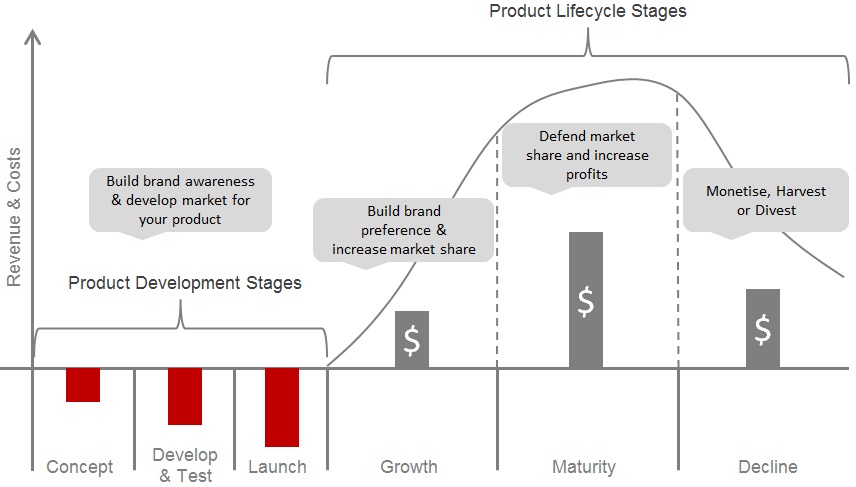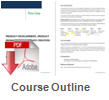
![]() Course Length
Course Length
Our product lifecycle management course is suitable for both novice and experienced product managers. Length of the course is typically 1 or 2 full days of learning with specific focus on practical examples and team exercises.
![]() Modules Breakdown (Example 2 Day Course)
Modules Breakdown (Example 2 Day Course)
| Module | Short Description | Duration (hours) |
| Day 1 | ||
| Product strategy, innovation, product maturity and exit | Development of product strategy, key factors in innovation, competition activity and customer preferences. | 2 |
| Competitive and market reviews | Ongoing market reviews in relation to existing product portfolios, trends analysis, impact of competitive activity | 2 |
| Portfolio management & planning | Product portfolio positioning, market and segment analysis, competition position, portfolio planing | 2 |
| Customer management | Management of customer opportunities, customer satisfaction | 1 |
| Day 2 | ||
| Product cost management | Product cost components, COGS, direct costs, indirect costs, cost model development, practical examples and review | 2 |
| Product price management | Market based pricing concept, components in pricing, competitive pricing review, internal costs inputs, value proposition and strength | 2 |
| Product performance management | Ongoing product performance metrics, EBIT, ROI, profitability, customer satisfaction measures. Service levels (SLA) design methodology and impact on customer satisfaction. | 2 |
| Other tools and tips | Leadership and staff choice, KPI development, portfolio planning, marketing planning and budget | 1 |
![]() Key Learning Objectives for Product Lifecycle Management Course
Key Learning Objectives for Product Lifecycle Management Course
| Module | Key Learning Objectives |
| Product innovation / product exit | Understand factors in innovation, competition activity and impact of customer preferences innovation |
| Competitive and market reviews | Learn how to conduct ongoing market reviews, trends analysis, impact of competitive activity |
| Portfolio management & planning | Understand product portfolio positioning, segment analysis, competition position, portfolio planing |
| Customer management | Learn about management of customer opportunities and on-going customer satisfaction metrics. |
| Product cost management | Understanding of product cost components, COGG, direct costs, indirect costs, cost model development |
| Product price management | Learn about market based pricing, how to conduct a competitive pricing review and determine market price |
| Product performance management | Learn about and ongoing product performance metrics and how to implement and monitor them |
| Customer management | Learn about management of customer opportunities and on-going customer satisfaction metrics. |
| Forecasting (revenue SIOs) | Learn about forecasting methodologies and how to common forecasting mistakes |
Follow Us
Contact Us
Wehli Strasse 35-43/5/17, 1200 Vienna, Austria
Phone: +43 670 306 1260
Suite 2302, 23/F Lee Garden Two, 28 Yun Ping Road, Causeway Bay, Hong Kong SAR
Phone: +852 58080130
Suite 1306, 83 Queens Bridge St. Melbourne Southbank VIC 3006 Australia
Phone: +61 400 668 580
Email: contact@parcusgroup.com
